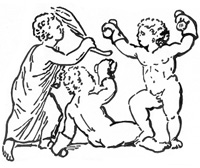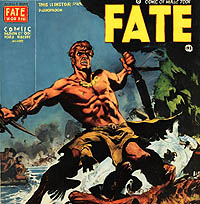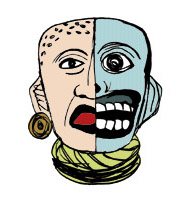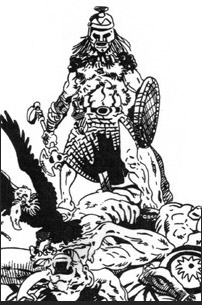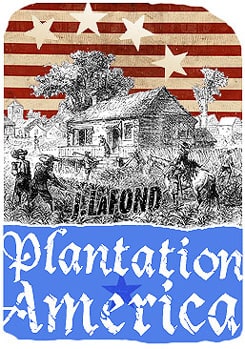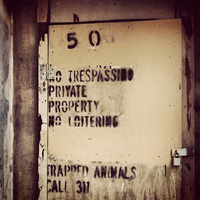The lore below is held by Joel, as the clearing house of local lore, and by the parties named as having this knowledge.
The Cedar Forest, as named by the rangers and their women, is also known as Hide Forest to the rest of the Willow Hamlet folk. The story goes, according to Captain Crane and Jailer Joe, that it is where fools run and hide, and are then caught, if lucky, and brought back to have a tan applied to their runnagate hide.
The typical girth of the cedar trees at the base exceeds the combined reach of three tall men, it taking four tall men to join hands around the base. These cedar trees have palm like fronds that hang rather than bristling with needles like other evergreens and flare dramatically at the base. Thus they are cut 7 feet from the ground for the straight timber that can be rolled as sawed rounds to be split for firewood, and or sawed into planks we they are felled.
The chief undergrowth is moss and fern and mushroom. The moss climbs the trees and coats the lower branches, which, in the shade lose their palms as their tops reach for the sun. The trees on the forest edge have lower branches by far, especially on the east and south side. Rangers use spiked seaman’s hatchets and steel dew claws buckled to the inside of their boots to climb the cedars for a vantage on the mountains and countryside.
Ordinary wildlife are:
-Grey Wolf, with one pack running between the southern bogs and northern mountains. These avoid parties of men but will attack individuals, especially in the cold months to come.
-Black bear who den in the mountains above and prowl through the cedar forest, grazing on mushrooms to access the berries in the bog and the willows. These bear avoid groups of men but have dined on runaway boys and girls often enough to develop a taste for female flesh.
-Panthers prowl the cedar forest. Their typical prey is black tail deer. They will attempt to poach lone dogs from camps by night. The chief danger of a panther is the possibility of it being possessed by a feathered contrary and used as a sending.
-Great owls and red hawks dominate the tree tops by night and day respectively and serve as the familiars of feathered contraries.
-Grouse, or blue forest chickens abound here.
-Moose do transit the forest and will attack groups or individuals on site in 1 of 6 meetings.
-Great Bristle Boars are by far the most dangerous and aggressive being of the Hide Forest and tend to attack men on sight.
…
Strange Creatures and Things
Hiedi Eggs is the chief expert on Minor Stotes.
The Minor Stote is a three foot tall flightless starling, a ravenous bird that attacks individuals of any type, not to kill, but to drink, each bird darting in to peck deeply and slurp blood from thighs [usually] and then run off. 3 to 12 Minor Stotes run in three rival flocks. These vicious birds chatter and screech and regard testicles and eyes as delicacies. Their beaks are classed as small dirks. They are extremely agile, do not stand and fight, but run and bound over and along deadfalls to hunt and evade. Their flesh tastes like pork and is valued by Stonish Giants but detested by humans, who know where the pork taste comes from—human blood. Stote eggs are found in clutches within hollow deadfalls and are similar to goose eggs. Black bears and wolverines seek these eggs. Every Minor Stote that has pecked at Hiedi has been hunted and killed by Bob, so that both are left alone.
Bob is the expert on Skunk Apes, avoids and respects them, and claims they are harmless if left alone.
Skunk Apes, are 6 to 8 foot tall apes which hoot and do not have the power of speech. They climb and wade well but do not swim and avoid deep water. They have long hair and thick matted fur, stink terribly of a musk, avoid human contact and are formidable combatants, whose only enemies are found in the Mountains, with no bear, wolf or panther risking a fight with these intelligent loners who never seem to be encountered in a group. No young or family groups have been encountered.
Bob, Hiedi and Arn share knowledge of this amazing creature below:
A Feathered Contrary is a being of apish stature, seeming at a distance and in dim light to be a Skunk Ape. Seen closer it is similar in gait and stature to the Skunk Ape, but gaunt legged and bony armed, its lower limbs having a downy fur and its upper limbs, torso and head being clothed in emerald green feathers. This creature is molested by none of the ordinary animals and has been seen in conclave by Bob, Jon and Arn, indeed seeming like a teacher or advisor, to Skunk Apes and Stonish Giants.
Bob thinks that there are only two feathered contraries, one with a red feather behind the arm pit and the other with a black feather. Hiedi has heard them sing by night as Skunks Apes hoot. They sing like owls, she claims, and suggests they are the result of a mating between an owl and a Skunk Ape, which Bob sneers at. Arn believes that these are the two gods of the Skunk Apes and Stonish Giants. Jon posits that they may be elder Stonish Giant priests.
The feathers of the Feathered Contrary are greatly valued by Lisa for making her dream catchers and are said to hold memories, dreams and even visual scenes of sorrows that have been witnessed by these beings. Feathered Contraries will not fight under any circumstances, are very difficult to catch and trap, but, when chased sometimes shed valuable feathers.
Any human who shoots at a Contrary will be stalked by a panther sending and face clawed, but not killed. If the Contrary is injured the panther will seek to kill.
If touched by a human or a handheld weapon one of seven effects may occur against which the violating human must save according to the governing ability score listed. The Contrary will sense the most vulnerable characteristic and act through that means, for instance, afflicting the stupid with dream:
-1. Sleep for a number or hours equal to the die roll difference, against constitution.
-2. Affliction of doubt, against level, with failure causing the character to return to the nearest settlement.
-3. Stunned, against charisma, by a day terror or night terror into reversing his course of action. The terror will hold valuable information about Crag Mouth, a glimpse of a location within it.
-4. Dream, against intelligence, permitting the character to receive an informative vision that may assist him. The character will then be unable to make eye contact with or harm this creature. This is called by Arn, “a contrary parley.”
-5. Tangled, against dexterity, causing the character to trip or slip or get caught on some aspect of the forest.
-6. Curse, against wisdom, causing the character who fails to obsess over a possible failure such as falling, losing a combat or miscasting a spell, triggering a disadvantage roll in that category of action until which time the character is blessed by this or another Contrary of by a holy figure, talisman [1] or shrine.
-7. Waking Dropsy, against strength, with the character failing, falling to dosing for a moment and then waking with a feather in his hand. So long as the feather is on his person, this person gains strength in the measure he failed his roll. When without this feather, he re rolls strength actions at a disadvantage, but gains an informative, though riddlesome dream at each new moon.
These creatures are not evil, are not aligned with the Kells and do work for the benefit of Skunk Apes and Stonish Giants. It is they who have carved the Mountain Organ described in The North Track. They feed on mushrooms and contrary berries and are sighted often in The Willows and Weeper Bog feeding.
…
Weeper Bog
All of the rangers avoid this place and will advise others to do likewise.
Weeper Bog is infested with Stotes, whose chief prey is moose, whose backs they jump upon to drink their blood. These bounding birds are 5 feet tall and attack alone, from ambush, by jumping on the back or shoulders and thrusting their blood sucking beaks into chest or back. They are incredibly strong and used to feasting on moose, bear and boar blood. Being stabbed with their beak is like a rapier sword thrust for maximum damage. There will only be one stab, these beasts being notable conservationists among vampire kind.
There is nothing worthwhile in this hellish bog, draped as it is in bearded black willow, and infested with contrary berry, which is described in the North Track.
There is a sinkhole that bubbles an acrid stench and is said to be a vent of Hell, filled with water and impassable.
…
Notes
-1. Lisa’s dream catchers are valuable for this.


